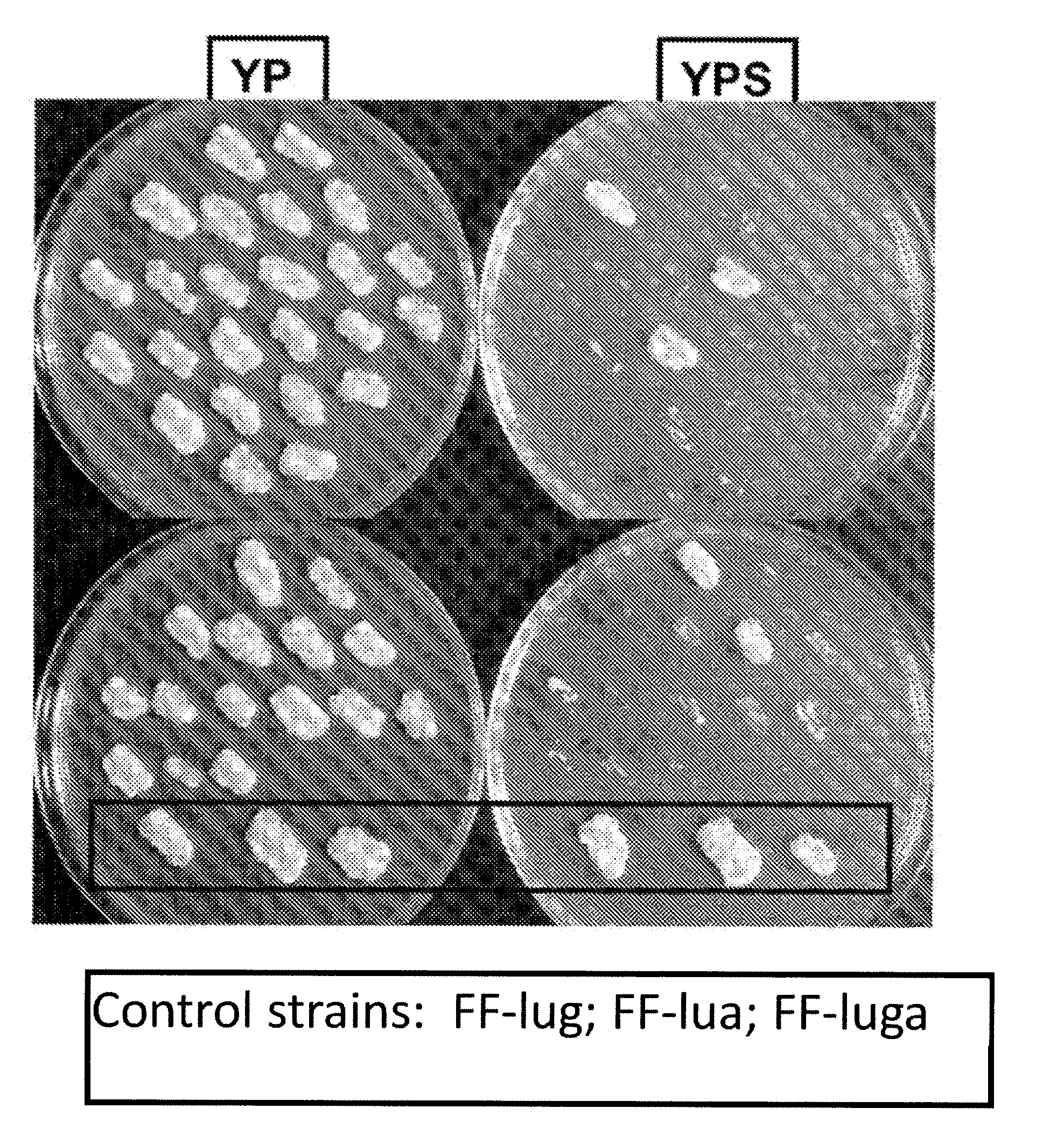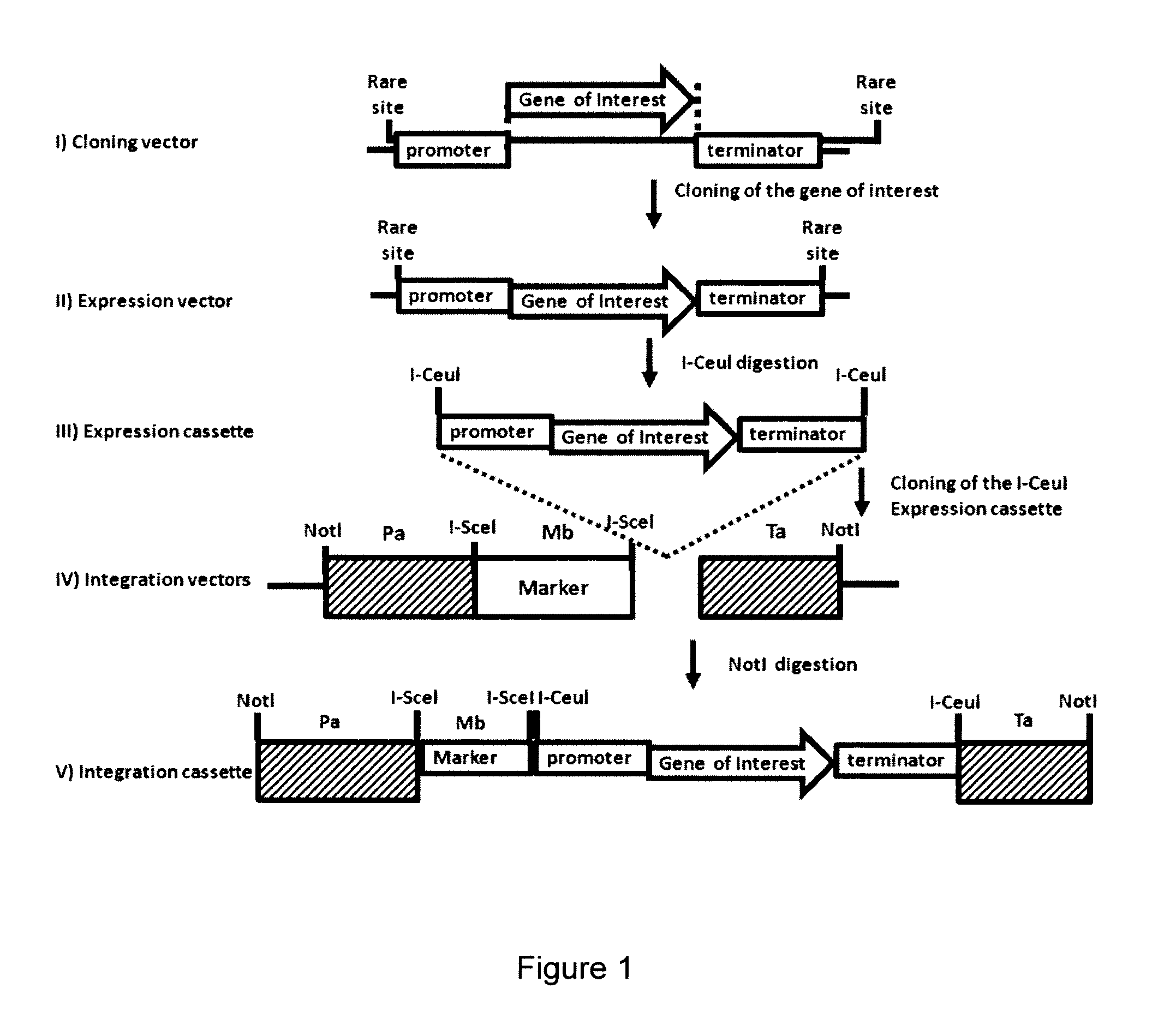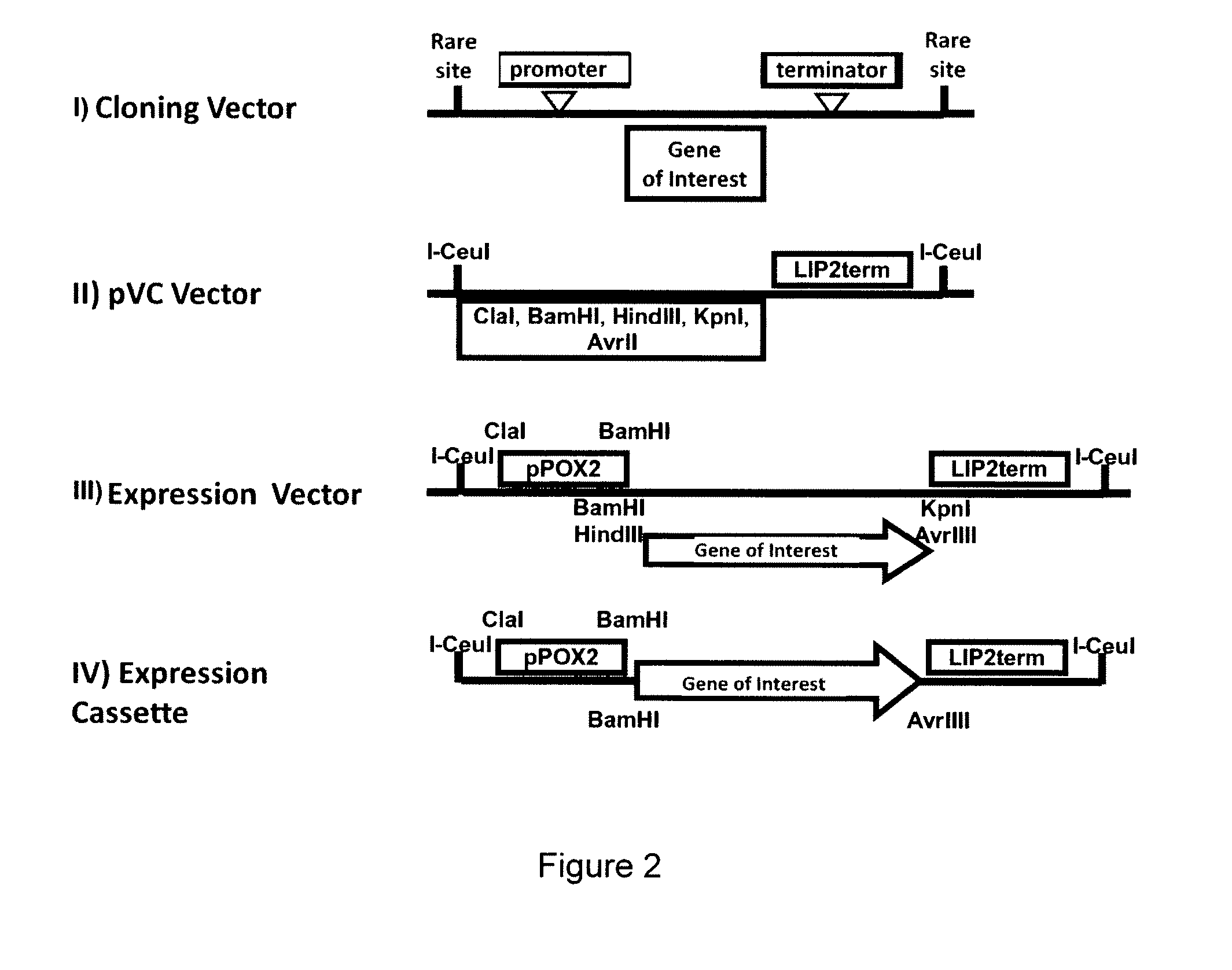Method for the Targeted Integration of Multiple Copies of a Gene of Interest in a Yarrowia Strain
a technology of yarrowia and gene, applied in the field of targeted integration of multiple copies of a gene of interest in the genome of a yarrowia strain, can solve the problems of large yield and great stability, none of these technologies have completely satisfied the requirements of industrial production, and the majority of yarrowia lipolytica /i>strains transformed by lip2 had mediocre genetic stability, and the effect of reducing the number of copies
- Summary
- Abstract
- Description
- Claims
- Application Information
AI Technical Summary
Benefits of technology
Problems solved by technology
Method used
Image
Examples
example 1
Strains Used in the Examples
[0107]The strains used in the method according to the invention are derived from a wild-type strain of Yarrowia lipolytica, in particular the wild-type strain Yarrowia lipolytica W29 (atcc 20460, indexed under CLIB89 in the Collection of the CIRM (Centre International de Ressources Microbiennes).
[0108]Thus, we can use new mutant strains derived from the Yarrowia lipolytica strain ATCC 20460 through the intermediary of the strain Po1d [auxotrophic strain got leucine (Leu−) and uracil (Ura−)], described in the publication of G. Barth et al.: Yarrowia lipolytica. in Nonconventional Yeasts in Biotechnology: A Handbook (Wolf, K., Ed.), Vol. 1, 1996, pp. 313-388. Springer-Verlag. It is indexed under CLBI139 in the CIRM.
[0109]Obtaining these new receiver strains (FF-lu, FF-lug (CNCM I-3911), FF-lua (CNCM I-3912), FF-luga (CNCM I-3913)) will be described later.
[0110]Obtaining the Strains
[0111]The mutant receiver strains usable in the method according to the inven...
example 2
Construction and Use of an Integration / Expression Cassette for the Targeted Insertion of a Gene Encoding for a Therapeutic Protein of Interest not Produced by Y. lipolytica
[0196]We took as example the L-asparaginase protein of Erwinia chyrsanthemi. The gene encoding for this protein was introduced into the vector pVC-pPOX2 at the HindIII / AvrII site. To do this, a fusion PCR was performed between the preproLIP2 sequence and the portion of the sequence of the gene encoding for the mature form of the L-asparaginase protein. PCR was performed with the primers preproLip2 and Lip2KR to amplify the pre-pro-LIP2 sequence and with the Laspens and Lasprev primers to amplify the sequence encoding for the mature protein. Then, by mixing the 2 PCR products obtained, the fusion with the preproLIP2 and pLasprev primers was carried out.
[0197]The preproLip2 primer contains the HindIII site and the Lasprev primer the AvrII site for cloning the fusion product in the pCV-pPOX2. The vector pVC-pPOX2-pr...
example 3
Transformation of the Integration / Expression Cassettes of the L-Asparaginase Protein in Y. lipolytica
[0199]It is possible, for example, to introduce successively 4 copies of the expression cassette of L-asparaginase in the 4 loci mentioned earlier in the FF-luga strain.
[0200]1 Insertion of the First Copy at the ADE2 Locus.
[0201]The first expression cassette was introduced by transformation of the FF-luga strain at the ADE2 locus using the integration / expression cassette PTAde2-Gut2-1.0Ex-LAsp from the vector JME941. The transformants are selected on selective YNBcasa medium supplemented with uracil and adenine and containing 1% glycerol as sole carbon source. The transformants obtained are isolated on this same selective medium and integration at the locus is verified by PCR using the primers Ver1ade2 and Ver2ade2 located upstream and downstream of the integration sequences.
[0202]The transformation rate obtained is 8.2 103 transformants per μg of DNA transformed.
[0203]Verification ...
PUM
| Property | Measurement | Unit |
|---|---|---|
| concentrations | aaaaa | aaaaa |
| concentrations | aaaaa | aaaaa |
| concentration | aaaaa | aaaaa |
Abstract
Description
Claims
Application Information
 Login to View More
Login to View More - R&D
- Intellectual Property
- Life Sciences
- Materials
- Tech Scout
- Unparalleled Data Quality
- Higher Quality Content
- 60% Fewer Hallucinations
Browse by: Latest US Patents, China's latest patents, Technical Efficacy Thesaurus, Application Domain, Technology Topic, Popular Technical Reports.
© 2025 PatSnap. All rights reserved.Legal|Privacy policy|Modern Slavery Act Transparency Statement|Sitemap|About US| Contact US: help@patsnap.com



